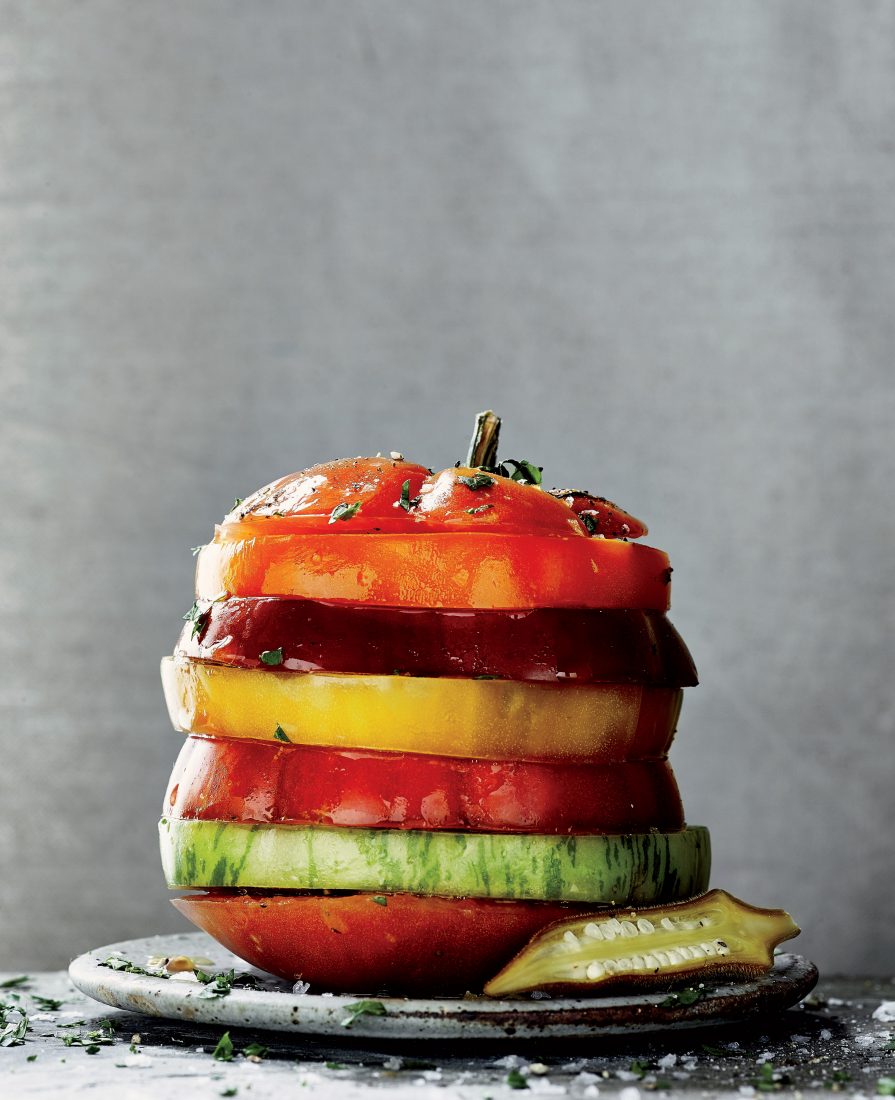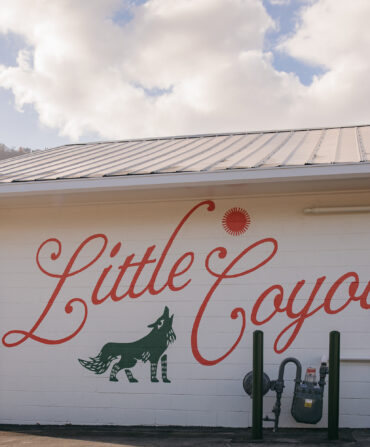Food & Drink
An Ode to Tomatoes: The Taste of the South
A paean to the fruit of summer

Photo: Johnny Autry
For such a boon companion in the food chain down through the centuries, the tomato had a fairly rough go, batted between cuisines across the Atlantic like an ancient court-tennis ball. Its many detours are not without irony. We consider the plant aboriginally American—as in Mesoamerican and South American, which fits: The tomato bears a sweet, water-filled, generally Southern spice redolent of a luxurious growing season.
Recognizing good food when they saw it, the Spanish took it to Europe in the 1500s, where it eventually came to be revered in Southern Europe’s kitchens. The robust etymology helps us track that: In Italy it was the pomodoro, the apple of gold; in Austria, Paradiesapfel, the apple of paradise; and in France, pomme d’amour, the apple of love, where it was thought an aphrodisiac. Five hundred years on from its Spanish introduction, chefs in Vienna still refer to it as a Paradeiser, and Provence chefs still call it the love apple.
Nobody much loved the noble nightshade-family fruit in English-speaking North America, however. The dour religious European refugees huddled in what became the northeastern United States—waterboarding each other on dunking stools and killing each other for imagined impieties—reviled the tomato as poison. Their almost-comic hatred of the tomato was fully in character. Because, let’s face it, a tomato dripping with the ripe tang of sweet and savory flavors is an open, sensual, flowery summer offering, the culinary equivalent of a beach romance. Our northern settlers couldn’t handle that.
Meanwhile, down on the Gulf, with better beaches, weather, and farmland at their disposal, our French and Spanish forebears were busy fueling the affair. Who gave a damn that the nutty Anglo-Saxons hated the thing—in the eighteenth-century South, the French and Spanish far preferred fighting the English to giving them good recipes. Aptly, then, Thomas Jefferson—Southerner, Francophile, negotiator of the Louisiana Purchase, ambassador to France—was an early battle-line crosser in America’s tomato wars. As a ravenous polyglot, Jefferson lived out his appetites in every arena of endeavor—agriculture, architecture, geopolitics, food, wine, and, famously, women.
Between 1809 and 1824, he dutifully recorded planting tomatoes in his Garden Kalendar, favoring the then-called “dwarf” and “Spanish” varieties. In shipping his brother Randolph tomato seed in 1813, Jefferson wrote, “I sent enough to put you in stock…” In other words, the former president was letting his brother know that he’d have enough fruit that season.
My own lesson in the sweet salvation tomatoes can bring came on a hundred-degree day on one of my father’s construction sites. I was fourteen, working as a ditchdigger and tool fetcher for his vastly more schooled carpenters and masons. Surviving the day meant retaining the ability to breathe and remain upright. While digging the ditch.
Lunch in that heat was negligible, more about water than food. But my mother had packed a little cooler with a sandwich and, on this day, a ripe tomato, left whole so that it would stand up to the banging around in the truck. The idea was to slice it with my pocketknife and put it on the sandwich. She’d iced everything.
By the time lunch rolled around, I had no appetite for the sandwich, but the tomato sweated with a pleasant weight in my hand. I’d used my pocketknife on some shingles and didn’t fancy flavoring the tomato with roofing tar, so I just stood up, leaned in, and took a bite out of the thing, as I would an apple.
The tomato was so bright and immediate that I forgot everything—the mulish footing I had been trying to square out in the clay, the pitiless sun—and I could feel the switch of appetite flick on way down deep as I crushed every bit of red ripeness in the plates of my mouth, not really bothering to chew. The sweet cold acid running down my throat straightened my back. The shock of taste made me look up to see the tops of the trees. My mother had tossed in a little shaker of salt. No time for that. I had to get at the tomato. Of course, tomatoes are finite. By the time you get at them, you’re through to the other side.
Over the course of life, I’m not exactly sure how we assemble our bodies’ chapbooks of what tastes good. As Proust showed us with his madeleine, food does travel with us along our road, in our energy, in what we do, and in our memories. I do know that we carry our catalogues of taste as cellular luggage, as a salmon does the scent of its home stream.
In every tomato that I’ve eaten since that one in Alabama, that’s the taste of home I hope to find.







